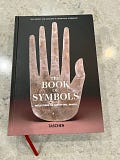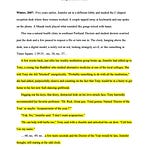Welcome back and in this post we think deeply about the translation of lived experience into story, also known as memoir.
There is so much going on in your work, so much more than you can imagine, and it’s happening all the time. I hope this Flying Lesson has given you a sense of that.
Today, we continue forward with a closer look at the ending, and endings in general.
Why Does the End Matter?
The ending of a story serves many purposes. It’s the final taste left in the mouth of the reader. It’s your moment to accentuate your art, to say a touch more about the core desire but also tip a hat toward the unknown.
A good ending, especially with memoir, is one that leaves the reader with a sense of dissonance, or a slight off-note. It’s a feeling of being done and yet something remains unfinished.
This quality is not unique in memoir, but fits memoir well because it is true to life. Dissonance is seen in your great novels and memorable films.
A few examples:
In Oh Pioneer’s by Willa Cather, the story ends with a heroine off to make a life with a man who finally “gets her” and giving up a dream that was a burden, but we are not sure where it will go or how it will work out. We have this sense of a woman, exhausted. Is she taking the easy way out? What next?
In A Prayer for Owen Meany by John Irving, narrator-John has told us of the improbable events of his best friend Owen who sacrifices himself to save a group of refugee children. In pondering these events and having told his long and complex story, John offers a prayer that God give Owen back to the world. And we, the reader, feel sad for John. We feel his loneliness as a collective longing for the divine.
In The Curious Case of Benjamin Button (2008), we are left with the death of the woman who has just finished telling a long tale to her lost and rather unmoored daughter. The daughter didn’t know her father but at the end knows that he was a man born old and aged backwards to be a baby who died in her mother’s arms. That final scene with a hurricane rolling in and a hummingbird appearing at the hospital window is dissonant. Odd. It leaves you wondering and a little perplexed. What did it all mean?
Another film is Thelma and Louise (1991) in which two women drive off a cliff at the end. We’re left with the image of a car in flight stopped in the moment of leaving the earth. Chills. We get chills. But why? What just happened? The mind grapples for answers but like that car in the air, we cannot grasp it.
Dissonance.
How to Create a Great Ending?
To be honest, I’ve never been able to write one that felt like, “Okay. Nailed it!” By the time I get to the end, I am usually worn out by the writerly effort. My brain hurts. It’s time to step back, take a hike, or get that kayak in the water and paddle.
Years ago, when an ending finally did arrive, it seemed to arrive on the wings of mystery and magic. But that wasn’t true. My endings were always found in my beginning because that’s where I went to gather a few symbols that I tried, artfully, to drop into the end.
Which brings me to SMTW.
Last week I asked what was up with that ending. What does she mean when describing her son like her mother? What’s the message there?
Paid subscribers, read on with my thanks.
Everyone else, might you consider becoming paid? For the price of a latte, you’ll enjoy this entire post, be part of a terrific community, get discounts, and more! Thanks. 🤗
Listen to this episode with a 7-day free trial
Subscribe to Flight School with Jennifer Lauck to listen to this post and get 7 days of free access to the full post archives.















